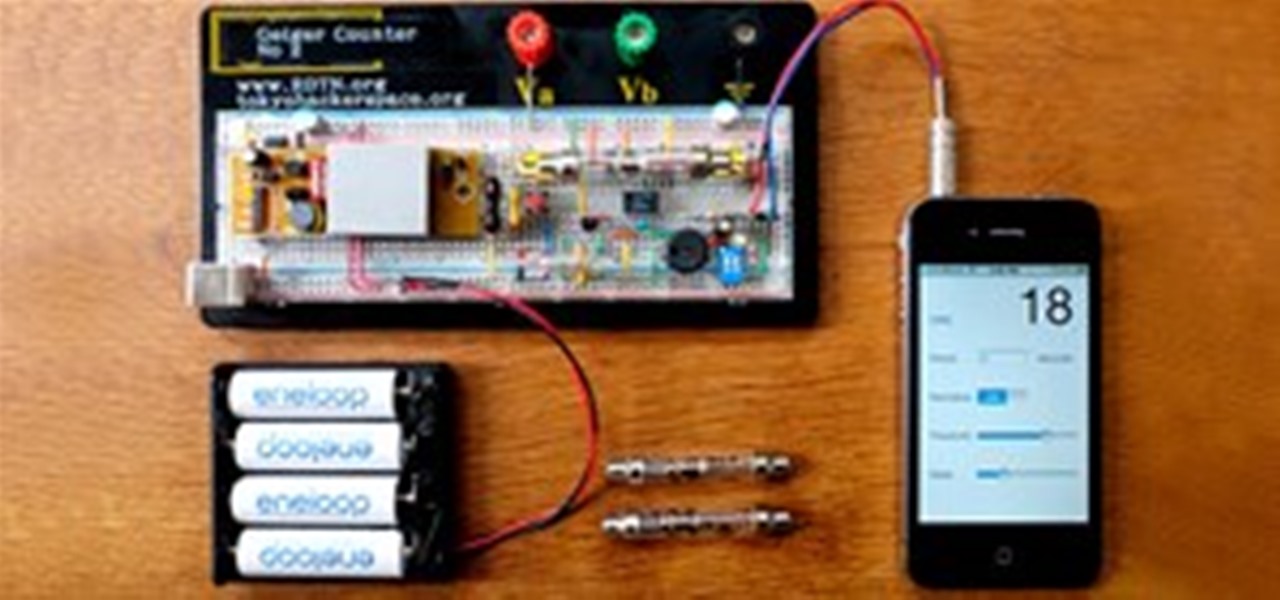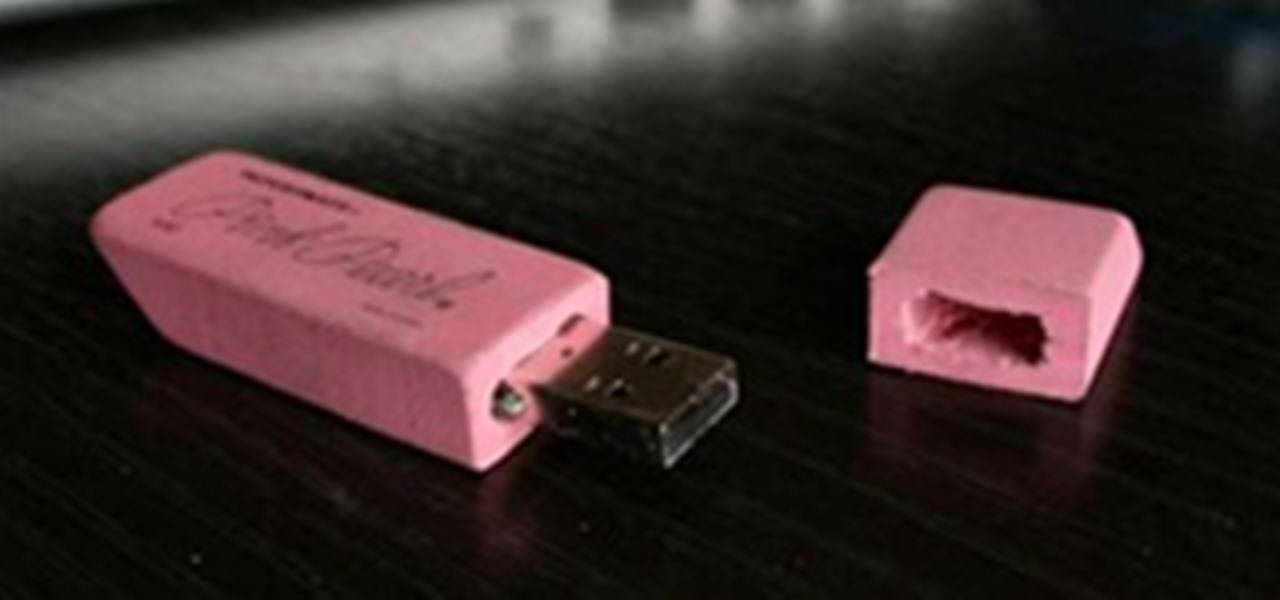
Backing up your files is a requirement in today's world of tech. In an instant, your storage device can fail. This is an unacceptable situation that should never happen to anyone. Storage is cheap, and backups are easier than ever to perform. Most of the time, this can be completely automated, so you can just set it and forget it. Today, Null Byte will be covering how we can automatically, and efficiently back up our data across all OS platforms, while giving a few alternatives to the built-i...

Adding to the growing list of Chromecast capable apps, today two entertainment streamers for both Android and iOS join the list; Crackle for videos, and Rdio for music.
QR Code is a 2D barcode symbology capable of encoding all types of data, such as numeric, alphabetic characters, Kanji, binary, text, url etc. To build a qr code generator in Microsoft Visual Studio, we can use a qr code generator .NET DLL by Avapose.com and follow these steps:

You might already know a little bit about what the National Ignition Facility has been up to lately, or what they could possibly achieve. But last week, even the scientists at the Livermore, California station couldn't predict the awesome power that their humongous laser was capable of. NIF's laser is already the record holder for the world's largest laser, and now it can also claim to be the first ever 2 megajoule ultraviolet laser after it generated nearly 100 times more energy than any oth...

It's sad to say, but I will no longer be writing up anymore Scrabble Challenges. Frankly, I just don't have the time to make them now. And though they are incredibly fun and "challenging" to conjure up, I'm not sure that people are finding them as useful as I had hoped. But really, it all comes down to time. So, unless I have a future craving for puzzle-making, last week's Scrabble Challenge #20 was the last one.

How to Crack Passwords Faster by Putting Your GPU to Work with HashcatSecurity on the internet is always changing. Not too long ago, having a 10 character password meant that you were safe from all forms of hash cracking. Hash cracking is when you take a string of characters that have been passed through a cryptographic hash and try to reverse them. The normal processors that are housed inside of our computer cases are general purpose. The processors are not meant for handling complex math an...

Here at Null Byte, we've spoken a lot about securing and anonymizing traffic. This is a big deal. With all of today's business taking place electronically via computers, we need to be secure when on-the-go. A lot of businesses don't even train their employees to secure their computers to protect from various threats. Here are a few things that should always happen when doing business on computers:

Giveaway Tuesdays has officially ended! But don't sweat it, WonderHowTo has another World that's taken its place. Every Tuesday, Phone Snap! invites you to show off your cell phone photography skills.

Welcome to another Community Byte announcement! In the past two sessions, we have coded an IRC bot in Python capable of issuing commands. Since it can issue commands and most of you are new to programming, that project will stay idle for a while. Other commands such as voice and half-op can be easily hacked in via common sense, even if you weren't there for that session.

Welcome to the second Goonight Byte! Our second coding session was kindly hosted by th3m, so props to him for letting this happen.

MIMESIS n pl. -MESISES or -MESES mimicry MIMETIC adj 61 points (11 points without the bingo)

Welcome to part two in a series about steganography, the art of hiding things in plain sight. We are practicing steganography because it can be a useful skill if you don't have access to encryption software, or need a quick solution to make sure the sender and recipient are the only ones who are able to read your message.

Often times when staying at a hotel or anywhere for that matter, you'll whip out your laptop and check the local area for Wi-Fi. I know you've all been in my shoes when you find an unsecured network that appears to be public Wi-Fi belonging to the hotel or airport, and you connect to it. You connect fast and perfectly, only to find that when you open your browser, it says you don't have an account, and are filtered from accessing the web. This is because the owners of the network want to keep...

Bitcoin is a new currency built off "Satoshi Nakamoto's" (alias) 2008 Bitcoin white-paper. Bitcoin provides its users with a way to make peer-to-peer (P2P) transactions without having to use a bank as a mediator. There is no middle man, no corporation backing it, and no one has access to your money, except you. It's decentralized from government, run by the people, for the people.

It's no secret that the Canon EOS 5D Mark II is being used in low-budget indie films, as well as big blockbuster movies from Hollywood. But it's also become a staple for television commercials.

Remember the good ol' days when you actually had to swipe your credit or debit card to make a payment at the store? Now all it takes is a flick of the wrist to purchase goods with your card, thanks to RFID (radio-frequency identification) technology from Chase (blink), Visa (payWave) and MasterCard (PayPass). But soon "contactless" payments will be made by an entirely different beast—NFC, which stands for near field communication.

Glasses-free 3D is devouring the United States, one mobile device at a time. First, gamers experienced autostereoscopic play with the Nintendo 3DS, then smartphone users got the HTC EVO 3D, and now laptops users can enjoy glasses-free 3D technology with Toshiba's upcoming Qosmio F750, available this August.

Lady Gaga and Polaroid's upcoming Grey Label Camera Glasses can record video and snap pictures, but who really wants to show the world what they're up too on those mini LCD screens? It's nothing more than a fancy gimmick between a pop star and a failing company. Isn't the intention of camera glasses to capture things around you as they are? Drawing attention to yourself with clunky video-displaying eyewear kind of defeats the purpose, but that's why they're "fashion" glasses and not practical...

Xe Systems, the Private-Defense-Contractor-Formerly-Known-As-Blackwater, has been busy attempting to re-brand themselves. They have a new name, several new sub-names, and have at least titularly shifted their focus to training rather than mercenary work. Controversial founder Erik Prince is no longer with the company, which is now owned by a large investment consortium.

Understandably, the tragedy in Japan has substantially risen the level of worldwide radiation-related hysteria. So much so, as an alternative to stampeding health food stores for iodine tablets, crafty individuals and organizations are hacking together personal radiation detectors. Rather than relying on the government, the creation and modification of handheld Geiger counters provides a self-sufficient solution to today's questions regarding radiation. Profiled below, three admirable organiz...

Penny pincher? A true believer in "waste not want not"? Then listen up—here's a quick tip that will save you some spare change.

The right combination of an appropriately awkward protagonist, a clever script with , and truly remarkable animation (including 3-d flying scenes that trump anything in ), made this flick a blast from start to finish.

Video game ranking site VGChartz reports that Mike Leyde, a 56-year old steel contractor from Riverside, California, has broken Bejeweled 2's scoreboard with a score of 2,147,783,647.

The Job Board is a weekly entry of the most ridiculous Cinematography related jobs posted online. DP

From Wikipedia, "Falconry is is a sport which involves the use of trained raptors (birds of prey) to hunt or pursue game for humans."

Solar panels are an amazing invention. Catching energy from the Sun before it even enters Earth's food chain, photovoltaics are like an all-natural nuclear power plant. Unfortunately, the constituted parts of a solar panel are rare, valuable, and subject to the coercive forces of market competition.

Science-fiction writer Jules Verne predicted many scientific breakthroughs, including the moon landing, tasers, and nuclear submarines. In his 1874 book The Mysterious Island, Verne writes:

Technology in computers these days are very favorable to the semi-knowledgeable hacker. We have TOR for anonymity online, we have SSDs to protect and securely delete our data—we can even boot an OS from a thumb drive or SD card. With a little tunneling and MAC spoofing, a decent hacker can easily go undetected and even make it look like someone else did the hack job.

In this article, I'll be covering Triggers and Coils, part two of the series (see part one here). Generally, a simple EMP generator consists of four components; a capacitor, a transformer, a trigger and a coil of copper wire. The transformer component can be varied, but the coil is very important, and must be precisely tuned.

File Transfer Protocol, or FTP, is a network protocol made for transferring files in a client and host fashion over a Transmission Control Protocol (TCP) network, such as the internet. FTP is integrated into most browsers, and you have probably used it before. It is a common way to host files and transfer them easily. To access an FTP, a login is required, unless the server is configured to use anonymous logins (like the Arch Linux mirrors).

CARRION n pl. -S dead and putrefying flesh 59 points (9 points without the bingo)

REVENANT n pl. -S one that returns 61 points (11 points without the bingo)

The noble board game has stalwartly staved off elimination in the face of more technologically advanced video games for four decades. Try as they might, video games just can't seem to surpass them as an easy-to-use diversion for large groups of seated indoor people.

This colorful image may look like a miniature set of model cars, foam buildings and painted grass, but it's nothing of the sort. It's a still photo from a time-lapse video that Stu Kennedy shot in his hometown of Lincoln, England. But it's not your ordinary time-lapse. Kennedy used his trusty new Samsung Galaxy S2 and its 8-megapixel camera to capture the video in high-definition (1080p). And that's not all. He also used a post-editing technique called tilt-shift, which transforms the normal ...

Giveaway Tuesdays has officially ended! But don't sweat it, WonderHowTo has another World that's taken its place. Every Tuesday, Phone Snap! invites you to show off your cell phone photography skills.

Every Friday here at Indie Games Ichiban, I will feature a sampling of reviews from the mountains of indie and vintage games that have crossed my internet connection in the past week. Each week will have some sort of theme, this week being old school turn-based strategy games available on Steam.

Yesterday's installment of a Gamer's Guide to Video Game Software featured Unity 3D; today we'll be covering one of the oldest consumer game making engines, RPG Maker.

Guitar Essentials My friends and I would secretly scribble tab in the darkly lit practice rooms in our university even though we were educated musicians. So, being able to read tablature, or tab, is essential for beginning guitarists.








































